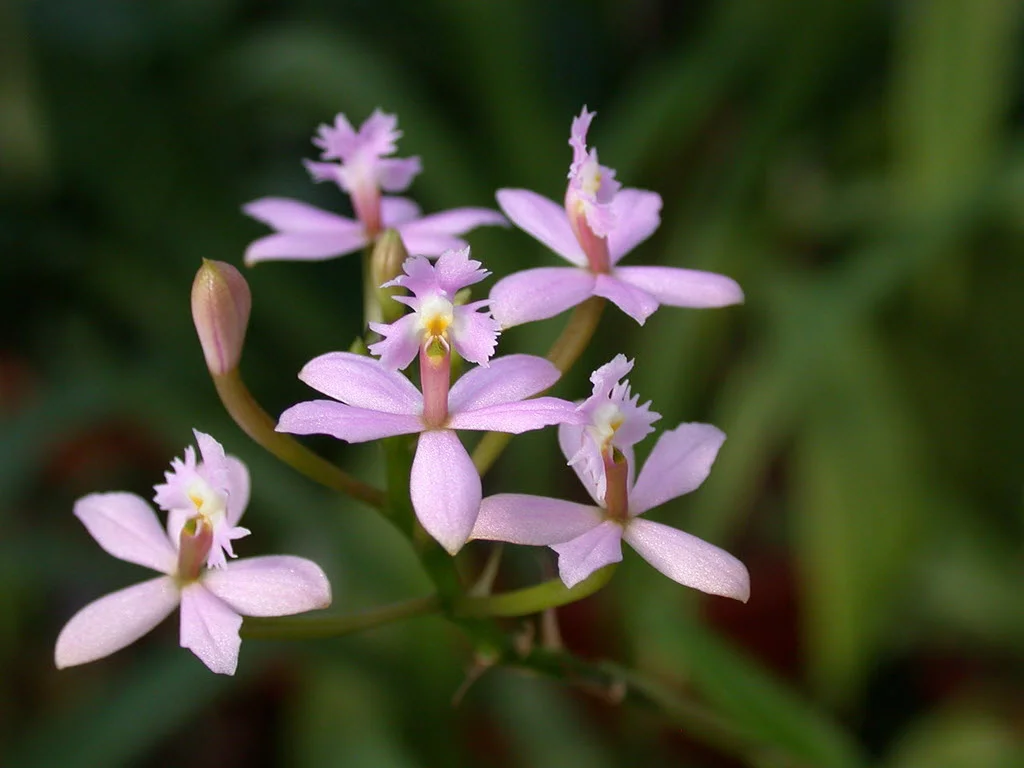Table of Contents
Pronunciation: gon-GOR-a
Other Names: Punch and Judy Orchids
Introduction
Gongora Orchids have large beautiful flowers that look like hanging earrings. They come in a variety of bold, bright colors that cascade in flower chains.
They are also called Punch and Judy orchids. Punch and Judy is a traditional, irreverent, but most of all violent puppet show, extremely popular in Victorian Britain.
Gongora Galeata
This orchid is classified as an epiphyte with long, thin, white aerial roots. The large, bold flowers have a strong fragrant scent that smells like allspice, cinnamon, or nutmeg that can quickly fill up a room.
Each growth cycle can produce several flower stems, and each stem can have up to 12 flowers.
Temperature
These orchids prefer intermediate to warm temperatures year-round. During the daytime hours, you should try to keep temperatures between 70°F to 85°F (21°C to 29°C). They can tolerate moderate temperature fluctuations, but they can't tolerate colder weather for prolonged periods. During the night, temperatures should stay between 55°F to 60°F (13°C to 16°C).
These plants originally come from tropical regions in Trinidad, Central America, and South America, so you should try to reproduce these growing conditions to ensure that your orchid grows as well as it can throughout the year.
Light
Your Gongora likes to have bright but indirect light. If you're growing your plant indoors, set it by a south-facing window or an east-facing window if you live in the northern hemisphere. You can get your orchid to adapt to bright, direct sunlight but this is a slower process.
If they're outside, make sure they have at least partial shade. They can tolerate less light as well, but this can cause their leaves to grow at a more horizontal angle and turn darker green. If your plant is healthy, but it's not blooming, try giving it more light to encourage growth.
Water and Humidity
Gongora Orchids like a lot of water, and you can water them liberally in the early morning hours once a day. You shouldn't ever let them dry out, and you should monitor them carefully to ensure that the roots stay moist all day. If they dry out, your orchid will die very quickly.
If you can combine this high water requirement with the higher humidity these plants enjoy, then you'll have the perfect 'tropical' habitat. The humidity levels should stay between 50% and 70% all day and into the night.
Feeding
During this orchid's rapid growth cycle in the spring and early summer, feed them weekly with a well-balanced fertilizer that you've diluted to around half strength. You also want to supplement in slow-release pellet fertilizer between feedings and apply this around the halfway point between feedings.
Once the fall months come around, you can cut back to feeding your orchid to once every two weeks, but keep supplementing it with the slow-release pellet fertilizer to encourage continued growth and new growth in the spring.
Potting
Your potting mix should be very well-balanced and ideally, you want it to retain moisture but allow the plant's roots to breathe. Sphagnum moss, coconut chips, and charcoal or sponge rock are good additions to your growing medium. It is a good idea to grow these plants in hanging baskets or wire mesh baskets to mimic their natural habitat growing in trees or in ant nests.
Repot your orchid once a year or once every two years. You have to be very careful with the roots because they're very easy to damage. Repot your plant in the spring when you notice new growth starting. Don't bury the plant's roots, and just lightly add the growing medium on top of your plant.
Video
MissOrchidGirl was ecstatic when her Gongora Orchids bloomed. Check her "dragons" out!
The world of orchids is a fascinating one. Apart from these colorful dragons, you’ll find slippers, octopi, and draculas. Check out our comprehensive list of the different types of orchids to see them all.











